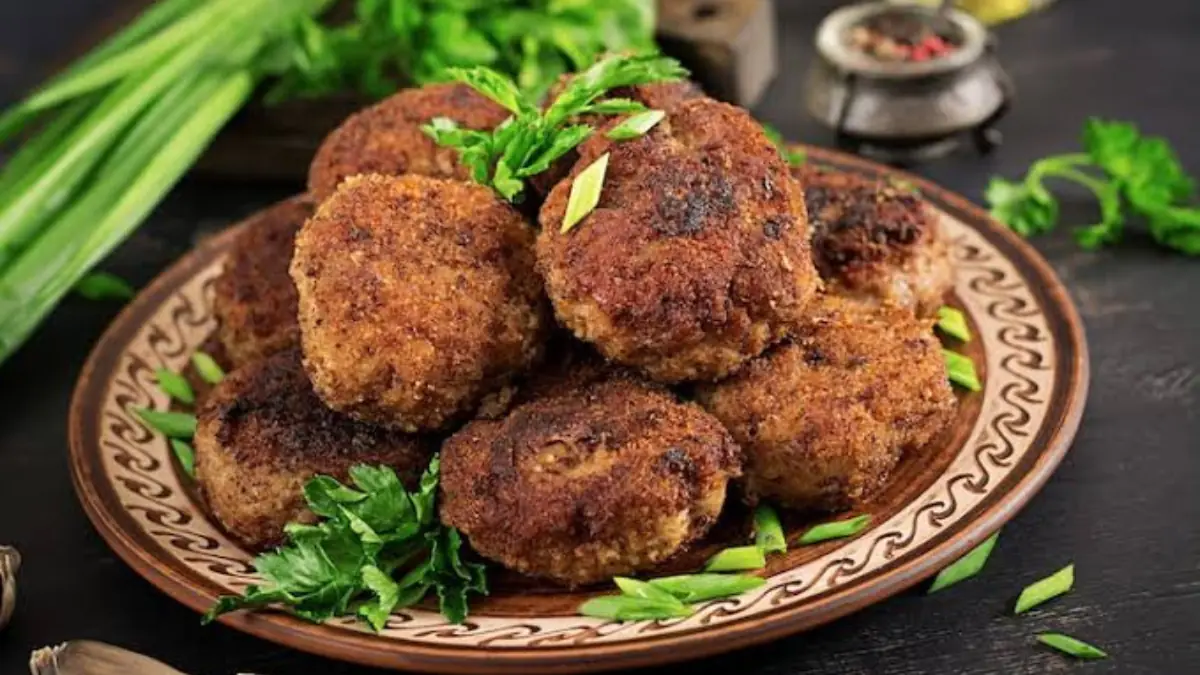Galouti Kebab holds a special place in the culinary heritage of Lucknow, representing the refinement of Awadhi cooking. The defining feature of this kebab is its delicate texture, achieved by repeatedly mincing the meat into a fine paste and incorporating tenderising agents like raw papaya paste. This ensures the meat breaks down completely during cooking, making it incredibly soft.
The spice blend for Galouti Kebab is equally important, with over a dozen hand-ground spices often going into the mix. Common additions include black cardamom, cloves, cinnamon, mace, nutmeg, black pepper, star anise, and dried rose petals, giving the kebabs their layered fragrance. The mixture is then shaped into small patties and pan-fried on a low flame to lock in moisture while creating a light golden crust.
While traditionally made with mutton, chicken or vegetarian versions can also be prepared by substituting the meat with minced chicken, lentils, or plant-based alternatives. In home kitchens today,
Galouti Kebab holds a special place in the culinary heritage of Lucknow, representing the refinement of Awadhi cooking. The defining feature of this kebab is its delicate texture, achieved by repeatedly mincing the meat into a fine paste and incorporating tenderising agents like raw papaya paste. This ensures the meat breaks down completely during cooking, making it incredibly soft.
The spice blend for Galouti Kebab is equally important, with over a dozen hand-ground spices often going into the mix. Common additions include black cardamom, cloves, cinnamon, mace, nutmeg, black pepper, star anise, and dried rose petals, giving the kebabs their layered fragrance. The mixture is then shaped into small patties and pan-fried on a low flame to lock in moisture while creating a light golden crust.
While traditionally made with mutton, chicken or vegetarian versions can also be prepared by substituting the meat with minced chicken, lentils, or plant-based alternatives. In home kitchens today, the process has been simplified with food processors and non-stick pans, making it easier to achieve the right texture without losing authenticity.
Galouti Kebabs are often served with sheermal, ulte tawa ka paratha, or roomali roti, along with a fresh mint and coriander chutney. A sprinkle of lemon juice just before serving enhances their flavour. For festive occasions or dinner parties, they can be served as appetisers, wrapped in small parathas, or plated with accompaniments like pickled onions and saffron-flavoured yoghurt.
Nutritionally, Galouti Kebabs are rich in protein from the meat, while the spices bring antioxidants and digestive benefits. Using lean meat and minimal oil can make them lighter without compromising taste. For beginners, patience during mincing and marination is key to achieving the signature softness that defines a true Galouti.








